On the Road is a weekday feature spotlighting reader photo submissions.
From the exotic to the familiar, whether you’re traveling or in your own backyard, we would love to see the world through your eyes.
lashonharangue
Etosha National Park, like most of Namibia, is very dry and barren. Because of this, you don’t see large herds of animals that can be found in places like Kenya or Tanzania. Most of the animals we saw were either drinking at water holes scattered around the park, or traveling to and from them. Some of these water holes are man-made while others were pre-existing. Many of the natural water sources are supplemented with water pumped from aquifers below.
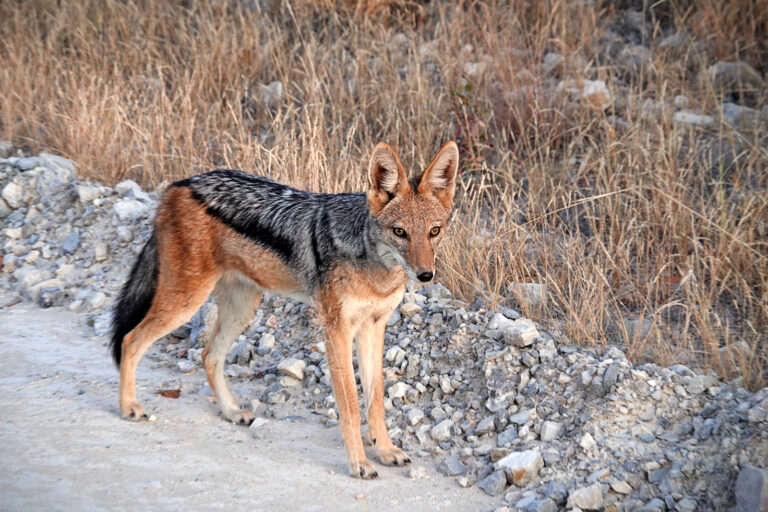
A black backed jackal that showed no fear around our vehicle.
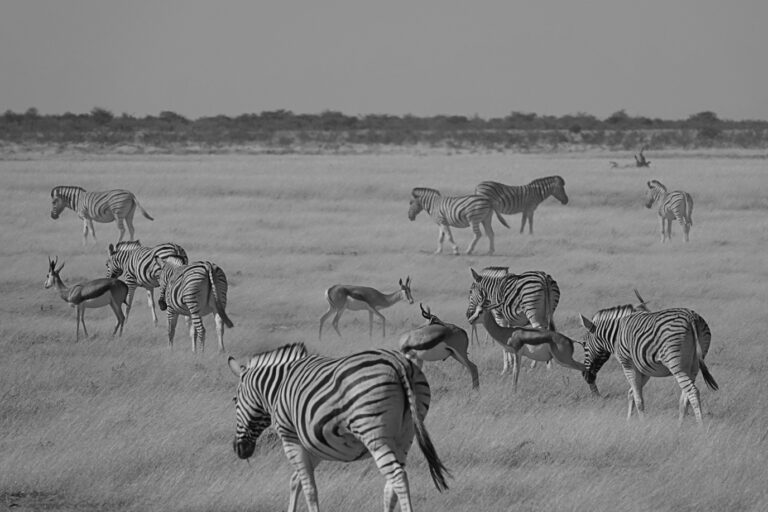
These are springboks and zebras headed to a water hole. The terrain was relatively flat and the colors washed out several months after the rainy season. l decided to render this in black and white. I was going for a safari in the early 20th century look. Maybe something out of an Agatha Christie novel.
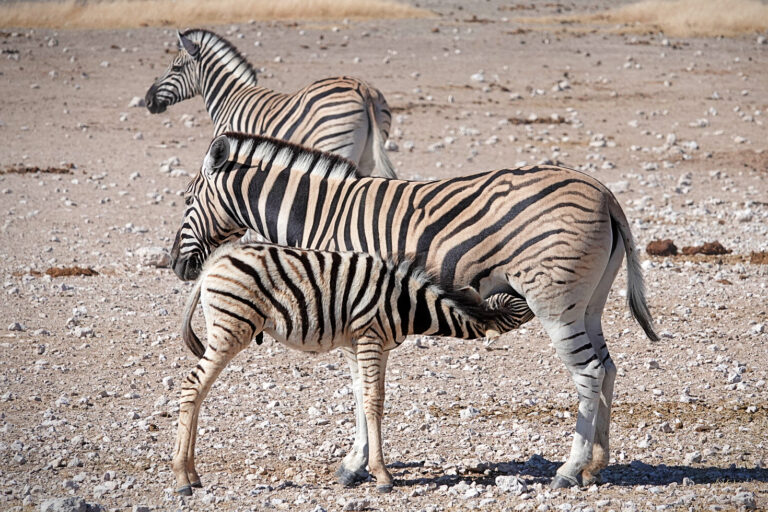
A young zebra nursing in this color photo.
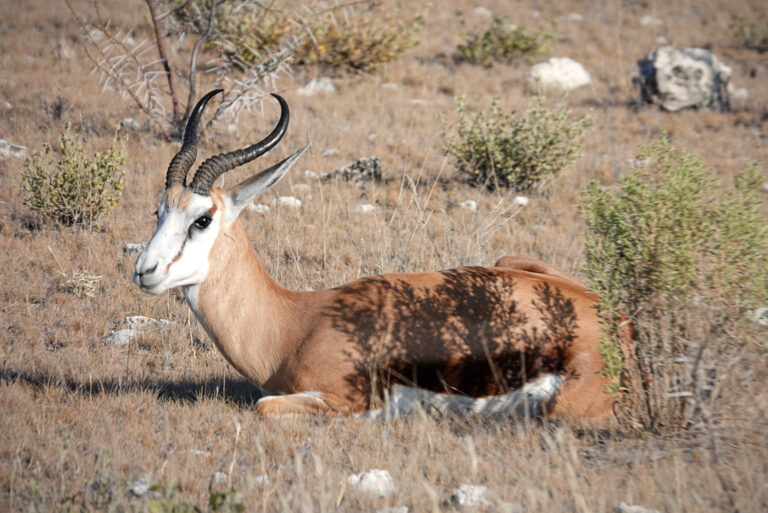
A springbok resting near a water hole. Both sexes have horns.
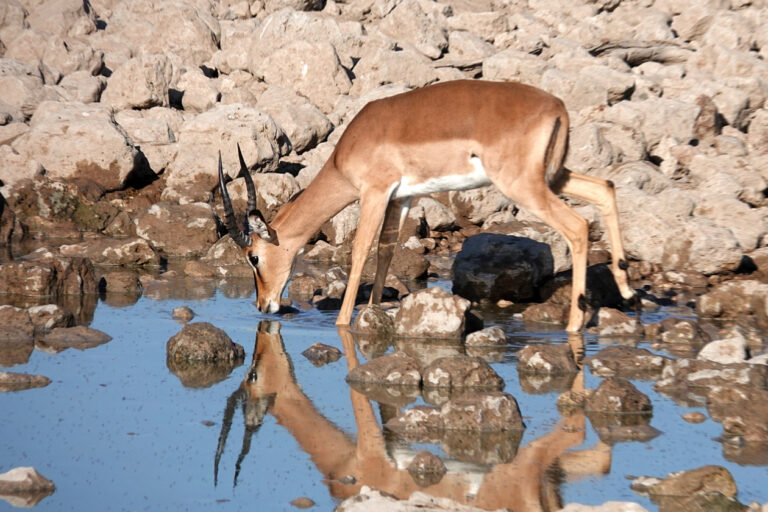
This is at the edge of a large water hole. It is located near the most developed section of the park. They had actually built a small covered viewing stand next to it. I took about a hundred photos here. Note the differences in coloring of the face and belly between this male impala (only males have horns) and the springbok in the previous photo. After our guide Jeremia pointed it out about a half a dozen times I was able to distinguish them apart.
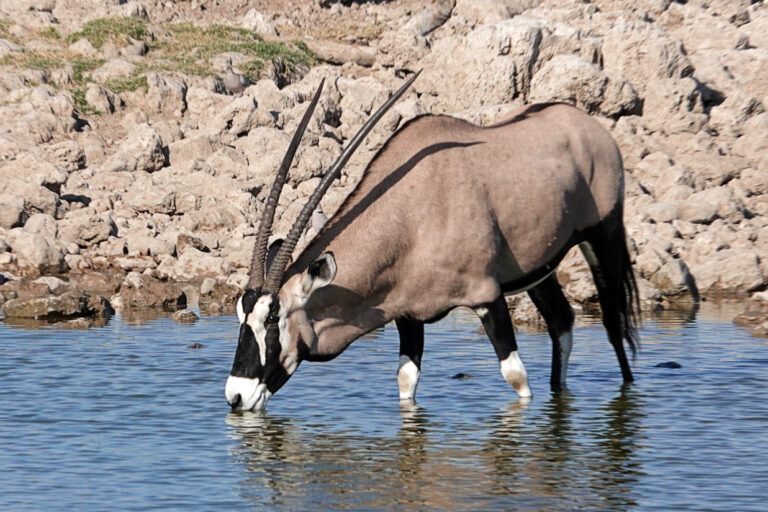
Another majestic oryx. The animal is also called a gemsbok in Africa. However, in Europe gemsbok is the common name for the chamois (Rupicapra rupicapra).
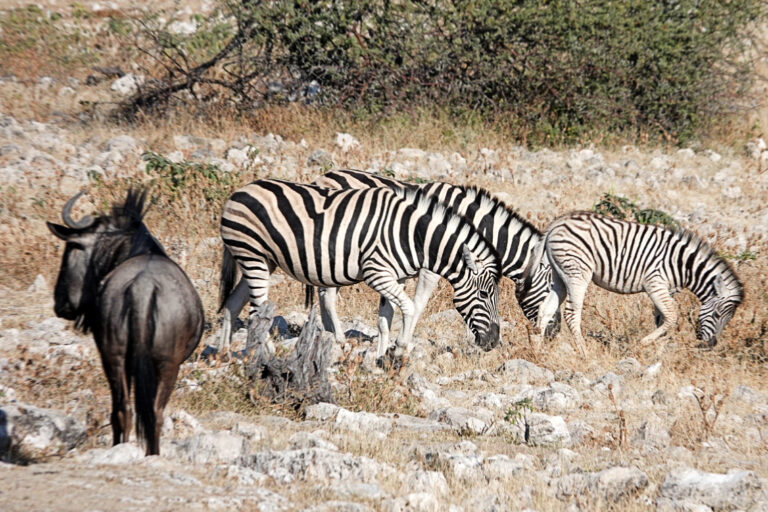
There was a group of wildebeest that came over to the water hole with many zebras. They sometimes herd together because it gives them more warning about predators. The wildebeest have a strong sense of smell and hearing, while the zebras have keen eyesight.
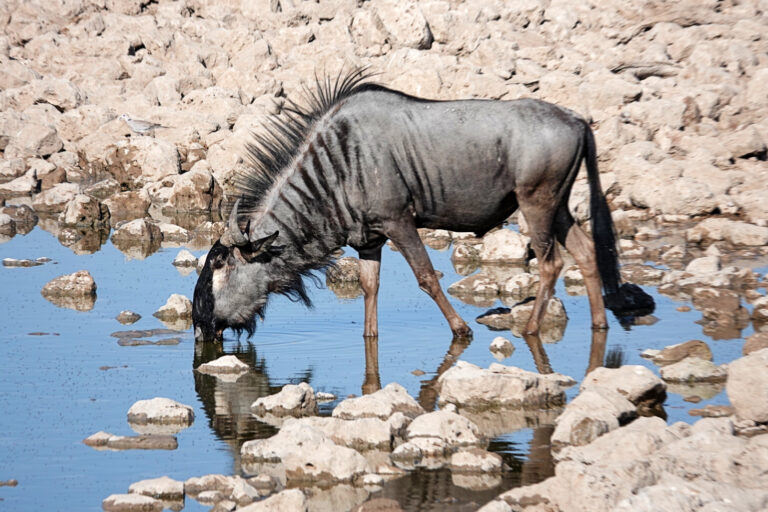
A better photo of a wildebeest at the water hole.
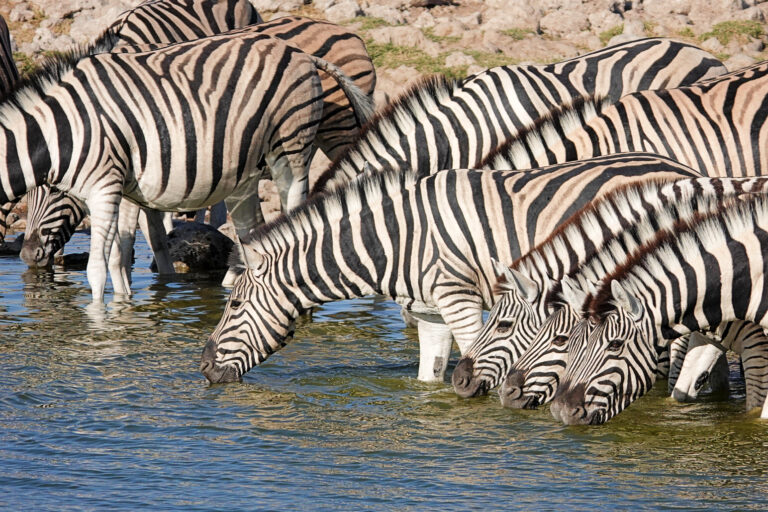
A “dazzle” of zebras.
Next – More Etosha critters

Baud
Yay! Jackal!
MagdaInBlack
@Baud: And a very handsome jackal it is.
JeanneT
Fantastic – I can tell you were especially smitten by the zebras (and rightfully so), but I’m glad you gave us a jackal pic too.
zhena gogolia
@Baud: He should replace the man with the balloon!
OzarkHillbilly
OK, I am sufficiently jealous now.
Anyway
Great pictures! Enjoying the series …
Elizabelle
Jackal looking watchful. Not vitriolic, at all.
Beautiful animals.
Tdjr
Wow. I want to go back to Africa.
Yutsano
JACKALS! ZEBRAS! ORYX! Once again proving this is indeed a full service blog.
EDIT: I’m pretty sure that jackal is wondering why these hoomans are not giving the snackies.
MelissaM
Zebras look so funny to me. I mean, who painted my horse? Why are you in prison? Do you think the vertical stripes make you look taller? Yet, I’d stare at them all day!
stinger
Wow — I’m bedazzled! Love all these pics, especially the last one!
TheronWare
Excellent wildlife pics! Such biodiversity and that Jackal!
Paul in KY
@MelissaM: Amazing coloration. Seems it might be to confuse large cats (who may have a sort of stroboscopic vision) or to keep cool (the change in temperature from the white to the dark patches causes micro breezes) or to confound biting flies (who are more attracted to brown colours) or maybe all three!
Gravenstone
That jackal is clearly sizing up a prospective meal.
pieceofpeace
So that’s what a jackel looks like – handsome fella.
But I liked seeing also a wildebeest, whose joints and legs resemble bamboo to me. I’m off to read more about them.
And to search for a book dedicated to how any and all wild animals got their names, with the why? included. And are the names different from one language to another. obviously, another rabbit hole….
Thank you for your wonderful posts!
BigJimSlade
Great wildlife shots!
WaterGirl
I think the wildebeest is the coolest of them all.